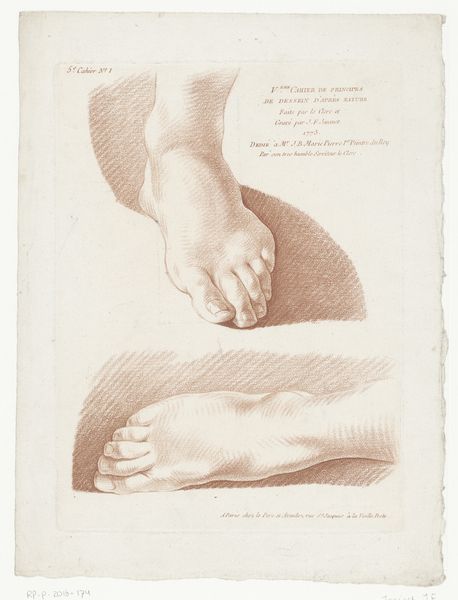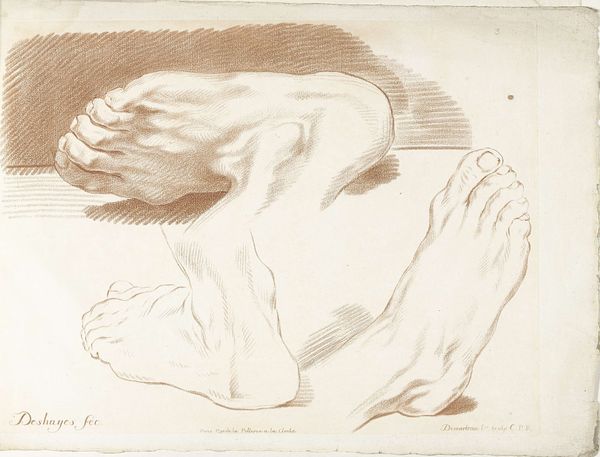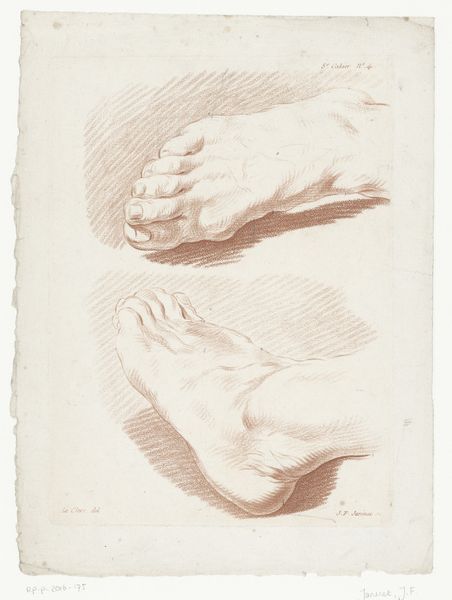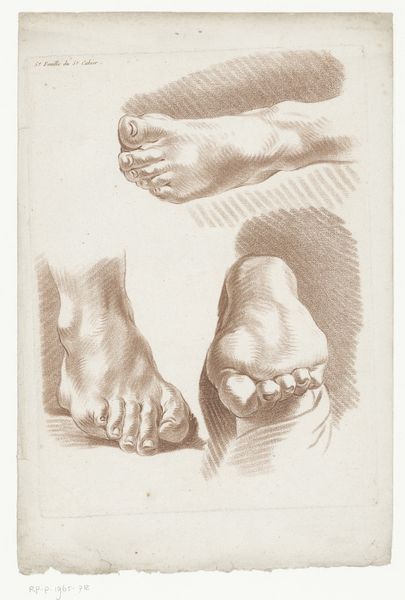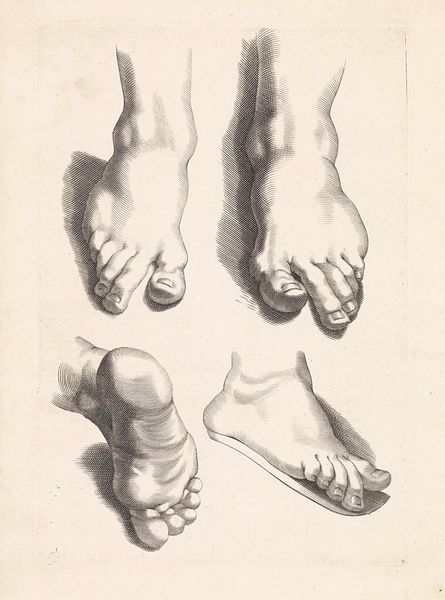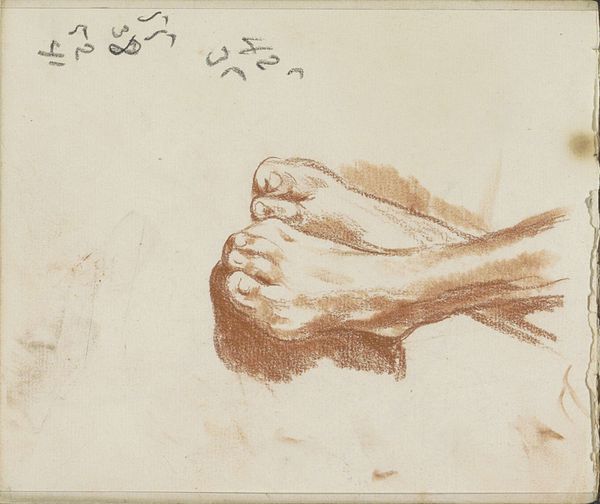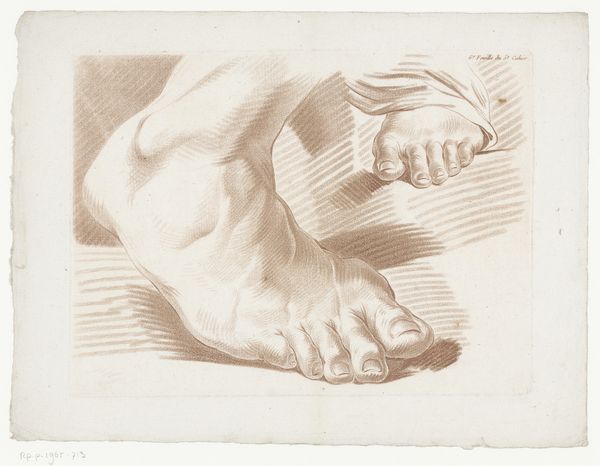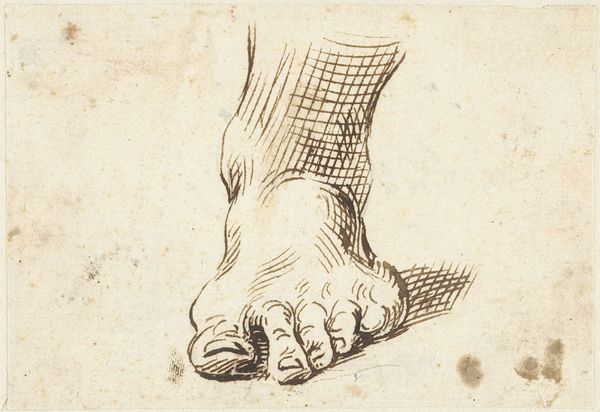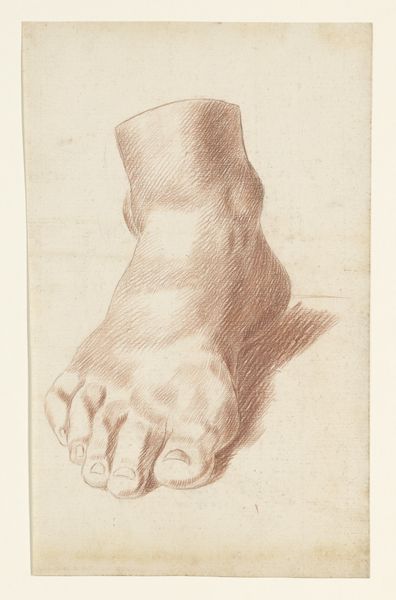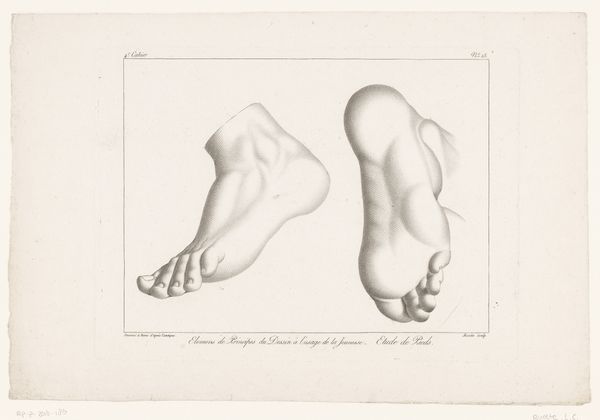
drawing, print, intaglio, pencil, engraving
#
pencil drawn
#
drawing
#
baroque
# print
#
intaglio
#
form
#
pencil drawing
#
pencil
#
line
#
portrait drawing
#
academic-art
#
nude
#
engraving
#
realism
Dimensions: height 315 mm, width 410 mm
Copyright: Rijks Museum: Open Domain
Curator: This is Gilles Demarteau's "Study of a Right Foot," made sometime between 1732 and 1776. It's an intaglio print, so an engraving or etching. Editor: It’s incredible how much detail Demarteau achieves! What stands out is the clear labor involved; each line meticulously placed. How would you interpret the social significance of such a detailed study? Curator: From a materialist perspective, the print speaks volumes about artistic production in the 18th century. Consider the engraver’s skill, the quality of the paper, the dissemination of such images. These weren’t simply aesthetic objects, but commodities produced by skilled laborers within specific economic systems. It would have taken serious time to learn the intaglio process. What kind of artistic training was required, and who had access to that knowledge and equipment? Editor: So, by examining the means of its production, we can understand more about who created art and for whom? Curator: Precisely! Think about the role of prints in disseminating knowledge and taste. These weren’t unique artworks, but reproducible images accessible to a broader audience than paintings, reflecting emerging capitalist models and influencing artistic trends. The artist has turned what could be mundane – a foot – into something valuable. Why isolate this body part and render it with such precision? Editor: Maybe it was an exercise, a way to perfect human form, and the skills to render it accessible for other artists too? A mass-produced model almost! Curator: Exactly! It speaks to a certain artistic economy focused on technical mastery as a means of upward mobility and the expansion of "good taste." But what's fascinating is how it blurs lines: Is it art or craft? Is the artist primarily creative, or a skilled manufacturer? These questions are at the core of materialist inquiry. Editor: I never thought about a simple foot having so much to say about economics! Thanks for highlighting that relationship for me. Curator: Likewise; I'm encouraged by your curiosity about production. Hopefully, we can encourage others to reflect on not just what art *is* but *how* and *why* it comes into being.
Comments
No comments
Be the first to comment and join the conversation on the ultimate creative platform.
